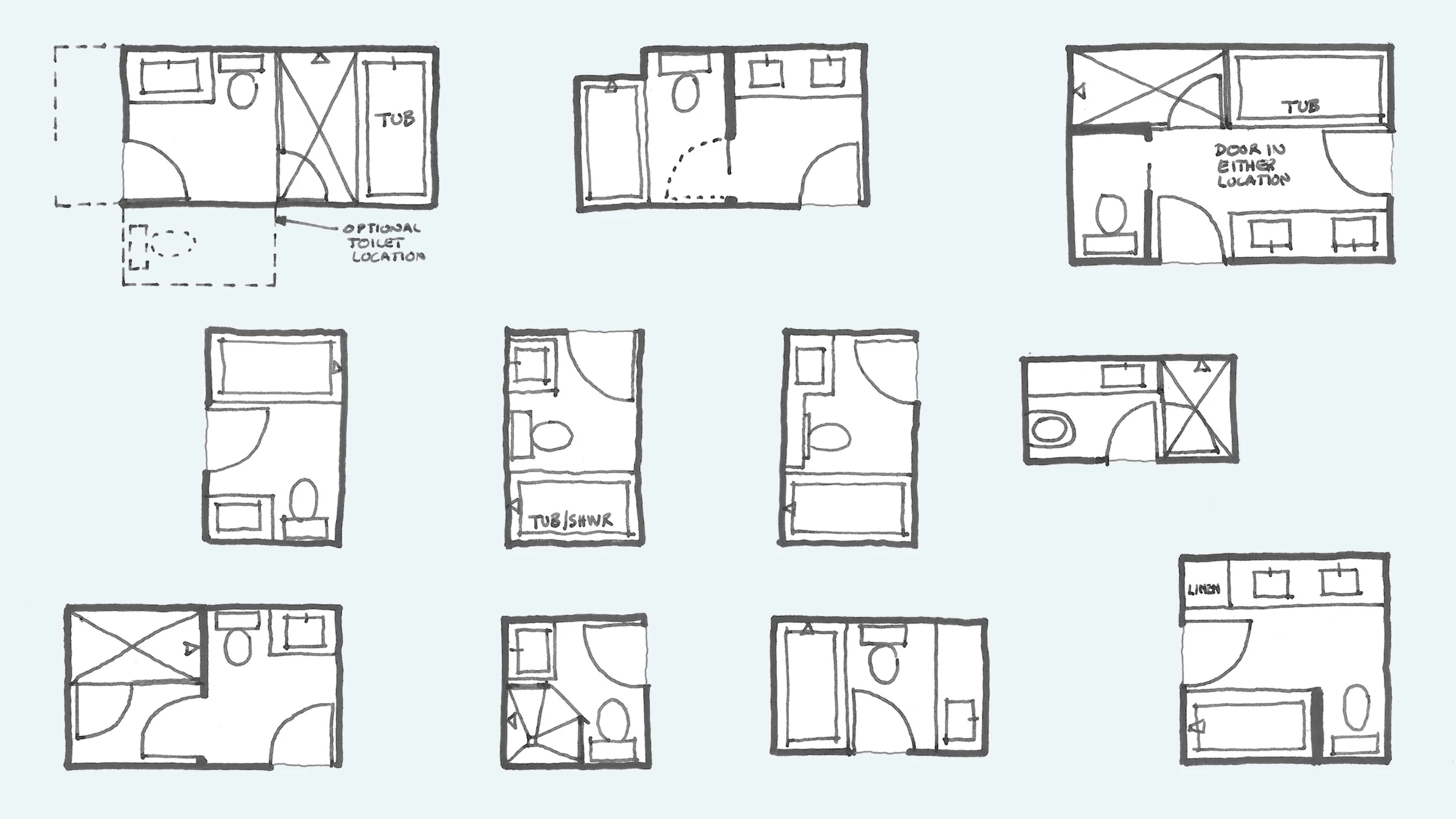Integrating Freestanding Tubs with Existing Spaces: Bathroom Floor Plans With Freestanding Tub

Integrating a freestanding tub into an existing bathroom without major renovations requires careful planning and creative design solutions. The goal is to create a harmonious and functional space that complements the existing layout and enhances the overall aesthetic.
Reconfiguring Bathroom Layout for a Freestanding Tub
Reconfiguring an existing bathroom to accommodate a freestanding tub involves optimizing the layout to maximize space and create a visually appealing arrangement. This can involve relocating existing fixtures, adjusting the size and shape of the bathroom, or creating a dedicated space for the tub.
A well-planned layout will ensure the freestanding tub becomes a focal point without compromising the functionality of the bathroom.
- Relocating Existing Fixtures: If possible, consider relocating fixtures such as the toilet, shower, or vanity to create space for the freestanding tub. This might involve moving plumbing lines, but it can significantly enhance the layout.
- Adjusting Bathroom Size and Shape: If necessary, consider slightly expanding the bathroom footprint to accommodate the tub. This might involve knocking down a wall or expanding into an adjacent space, depending on the existing structure and building codes.
- Creating a Dedicated Space: If the bathroom is small, consider creating a dedicated space for the tub by using a room divider or a partial wall to separate it from the rest of the bathroom. This allows for a more intimate and luxurious experience.
Maximizing Natural Light and Ventilation
Maximizing natural light and ventilation is crucial for creating a comfortable and inviting bathroom space, especially when incorporating a freestanding tub. This enhances the overall ambiance and ensures proper air circulation to prevent moisture buildup.
- Positioning the Tub Near a Window: Placing the freestanding tub near a window allows for natural light to illuminate the space and create a sense of openness. This is particularly beneficial for smaller bathrooms, as it visually expands the space.
- Utilizing Skylights: Consider installing a skylight to introduce natural light into the bathroom, especially if the tub is positioned in a location away from windows. Skylights can also provide a dramatic and elegant touch to the space.
- Ensuring Adequate Ventilation: Proper ventilation is essential to prevent moisture buildup and maintain a comfortable environment. Install an exhaust fan to remove steam and moisture generated during bathing. This can be a simple fan or a more advanced system with humidity sensors.
Impact on Bathroom Storage and Layout, Bathroom floor plans with freestanding tub
Incorporating a freestanding tub can impact bathroom storage and layout, particularly in smaller spaces. Careful planning and creative solutions are necessary to ensure adequate storage and a functional layout.
- Utilizing Vertical Space: Maximizing vertical space is crucial for storage in a bathroom with a freestanding tub. Consider tall cabinets, shelves, or storage towers to maximize storage capacity without compromising floor space.
- Creating a Dedicated Storage Area: If space allows, consider creating a dedicated storage area for towels, toiletries, and other bathroom essentials. This could be a small cabinet, a built-in shelving unit, or a freestanding storage solution.
- Optimizing Layout for Functionality: The layout should be designed to allow for easy movement around the tub and other fixtures. Consider the placement of the toilet, shower, and vanity to ensure a comfortable and efficient flow of traffic within the bathroom.
